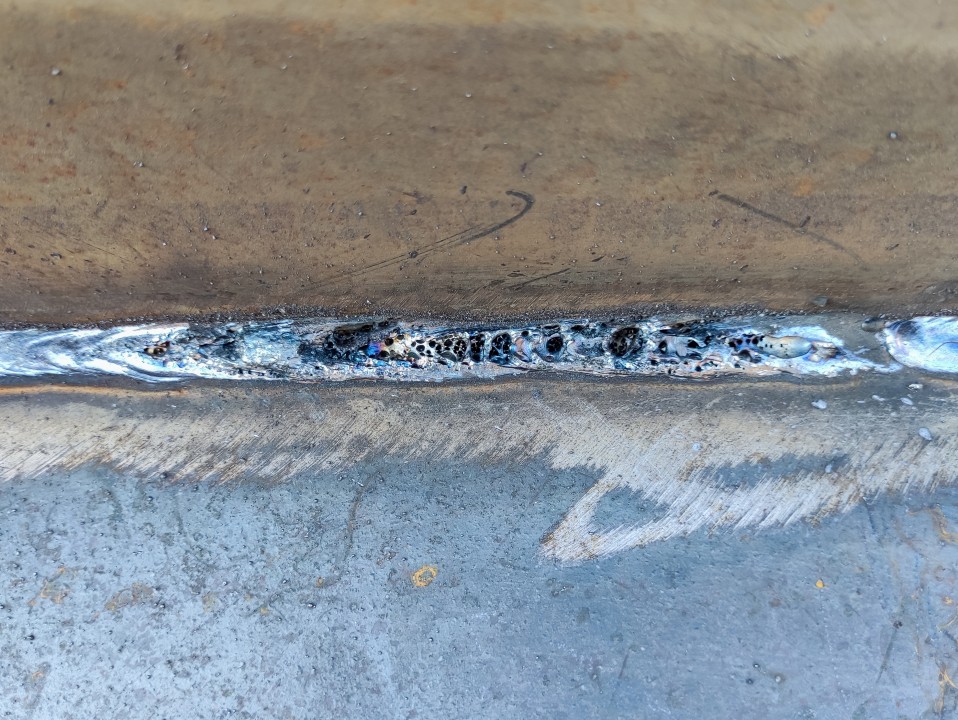Understanding What is Porosity in Welding: Reasons and Solutions
Understanding What is Porosity in Welding: Reasons and Solutions
Blog Article
Porosity in Welding: Identifying Common Issues and Implementing Finest Practices for Prevention
Porosity in welding is a pervasive issue that usually goes unnoticed till it triggers substantial issues with the stability of welds. In this conversation, we will certainly check out the key aspects contributing to porosity development, examine its damaging effects on weld efficiency, and discuss the best practices that can be taken on to minimize porosity event in welding procedures.
Common Reasons For Porosity

One more regular perpetrator behind porosity is the presence of contaminants externally of the base steel, such as oil, grease, or corrosion. When these contaminants are not properly eliminated prior to welding, they can evaporate and come to be entraped in the weld, creating defects. In addition, using filthy or damp filler products can introduce pollutants right into the weld, adding to porosity issues. To alleviate these usual reasons of porosity, complete cleaning of base steels, appropriate securing gas option, and adherence to optimal welding specifications are necessary practices in accomplishing high-grade, porosity-free welds.
Influence of Porosity on Weld Top Quality

The existence of porosity in welding can substantially compromise the architectural integrity and mechanical homes of bonded joints. Porosity produces gaps within the weld metal, weakening its general toughness and load-bearing capacity.
Welds with high porosity levels tend to display lower impact toughness and decreased capacity to warp plastically before fracturing. Porosity can hinder the weld's capability to effectively transmit forces, leading to early weld failing and potential safety and security hazards in crucial structures.
Best Practices for Porosity Avoidance
To enhance the structural stability and top quality of bonded joints, what certain steps can be executed to reduce the occurrence of porosity during the welding procedure? Porosity avoidance in welding is critical to make certain the honesty and stamina of the last weld. One efficient practice is proper cleaning of the base steel, getting rid of any kind of contaminants such as corrosion, oil, paint, or moisture that might cause gas entrapment. Guaranteeing that the welding equipment remains in great condition, with tidy consumables and appropriate gas circulation prices, can likewise significantly minimize porosity. In addition, maintaining a stable arc and regulating the welding specifications, such as voltage, existing, and take a trip rate, aids create a consistent weld swimming pool that lessens the risk of gas entrapment. Using the right welding technique for the certain material being bonded, such as adjusting the welding angle and weapon position, can better stop porosity. Regular examination of welds and instant removal of any concerns recognized throughout the welding procedure are crucial techniques to avoid porosity and produce premium welds.
Importance of Proper Welding Methods
Carrying out proper welding strategies is extremely important in making sure the structural integrity and top quality of bonded joints, building on the foundation of reliable porosity prevention measures. Welding strategies directly affect the total stamina and sturdiness of the bonded framework. One essential element of correct welding methods is keeping the proper warmth input. Extreme warm can result in look at these guys increased porosity because of the entrapment of gases in the weld swimming pool. Conversely, inadequate warmth might cause incomplete fusion, creating potential powerlessness in the joint. In addition, making use of the appropriate welding parameters, such as voltage, present, and take a trip speed, is crucial for achieving audio welds with very little porosity.
Furthermore, the option of welding procedure, whether it be MIG, TIG, or stick welding, need to line up with the particular requirements of the job to ensure ideal outcomes. Appropriate cleansing and prep work of the base metal, in addition to selecting the ideal filler material, are also crucial components of proficient welding techniques. By adhering to these best methods, welders can reduce the risk of porosity development and create high-grade, structurally sound welds.

Evaluating and Quality Assurance Actions
Evaluating procedures are crucial to find and prevent porosity in welding, making sure the toughness and toughness of the final item. Non-destructive screening approaches such as ultrasonic screening, radiographic testing, and aesthetic evaluation are generally utilized to recognize potential flaws like porosity.
Performing pre-weld and post-weld examinations is likewise crucial in keeping quality control standards. Pre-weld inspections include validating the products, devices settings, and cleanliness of the workplace to stop contamination. Post-weld assessments, on the various other hand, assess the final weld for any type of problems, consisting of porosity, and validate that it meets defined criteria. Implementing an extensive quality assurance strategy that includes detailed screening treatments and inspections is paramount to reducing porosity problems and making sure the overall top quality of welded joints.
Conclusion
To conclude, porosity in welding can be a typical issue that influences the high quality of welds. By identifying the common reasons of porosity and carrying out finest view publisher site techniques for prevention, such as appropriate welding strategies and screening steps, welders browse around this web-site can guarantee excellent quality and reputable welds. It is vital to prioritize prevention techniques to minimize the occurrence of porosity and preserve the honesty of bonded structures.
Report this page